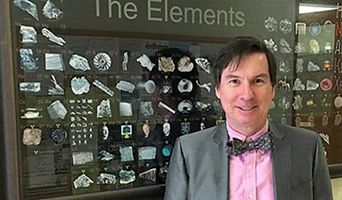Peter Harrington Receives EAS Award for Outstanding Achievements in Chemometrics
The Eastern Analytical Symposium (EAS) Award for Outstanding Achievements will be presented to Peter de Boves Harrington on Tuesday, November 19.
The Eastern Analytical Symposium (EAS) Award for Outstanding Achievements was presented to Peter de Boves Harrington on Tuesday, November 19. Harrington gave a talk on “Chemometrics for the Masses: How to Painlessly Improve Your Science.”
Peter Harrington

Harrington received his PhD from the University of North Carolina-Chapel Hill in 1988. From 1987 to 1989 he created the DOS-based software platforms Resolve and Presager for identifying bacteria from their pyrolysis-mass spectra, while working for Kent Voorhees at the Colorado School of Mines. He joined the faculty of Ohio University (Athens, Ohio) in 1989. In 1992, he founded the Center for Intelligent Chemical Instrumentation. He has more than 200 publications, and has made more than 300 scientific presentations, including many plenary and keynote speeches around the world. In 2016, Harrington won the Ohio University College of Arts & Sciences Outstanding Faculty Research Award and the 2019 Eastern Analytical Symposium Award for Outstanding Achievement in Chemometrics. He is the Director of the Ohio University Center for Intelligent Chemical Instrumentation and is a Fellow of the American Academy of Forensic Sciences and the North American Academy of Sciences. Harrington’s current research focuses on the development and coupling of artificial intelligence to chemotyping by spectrometric measurements of botanical medicines and foods.
Best of the Week: Exclusive on Flow Imaging Microscopy, Interview with PNNL Chief Science Officer
April 4th 2025Top articles published this week include several interviews with key opinion leaders on various topics including advanced mass spectrometry (MS) technologies in studying diseases, microplastic detection, and interpreting Raman spectra.
New Multi-Spectroscopic System Enhances Cultural Heritage Analysis
April 2nd 2025A new study published in Talanta introduces SYSPECTRAL, a portable multi-spectroscopic system that can conduct non-invasive, in situ chemical analysis of cultural heritage materials by integrating LIBS, LIF, Raman, and reflectance spectroscopy into a single compact device.